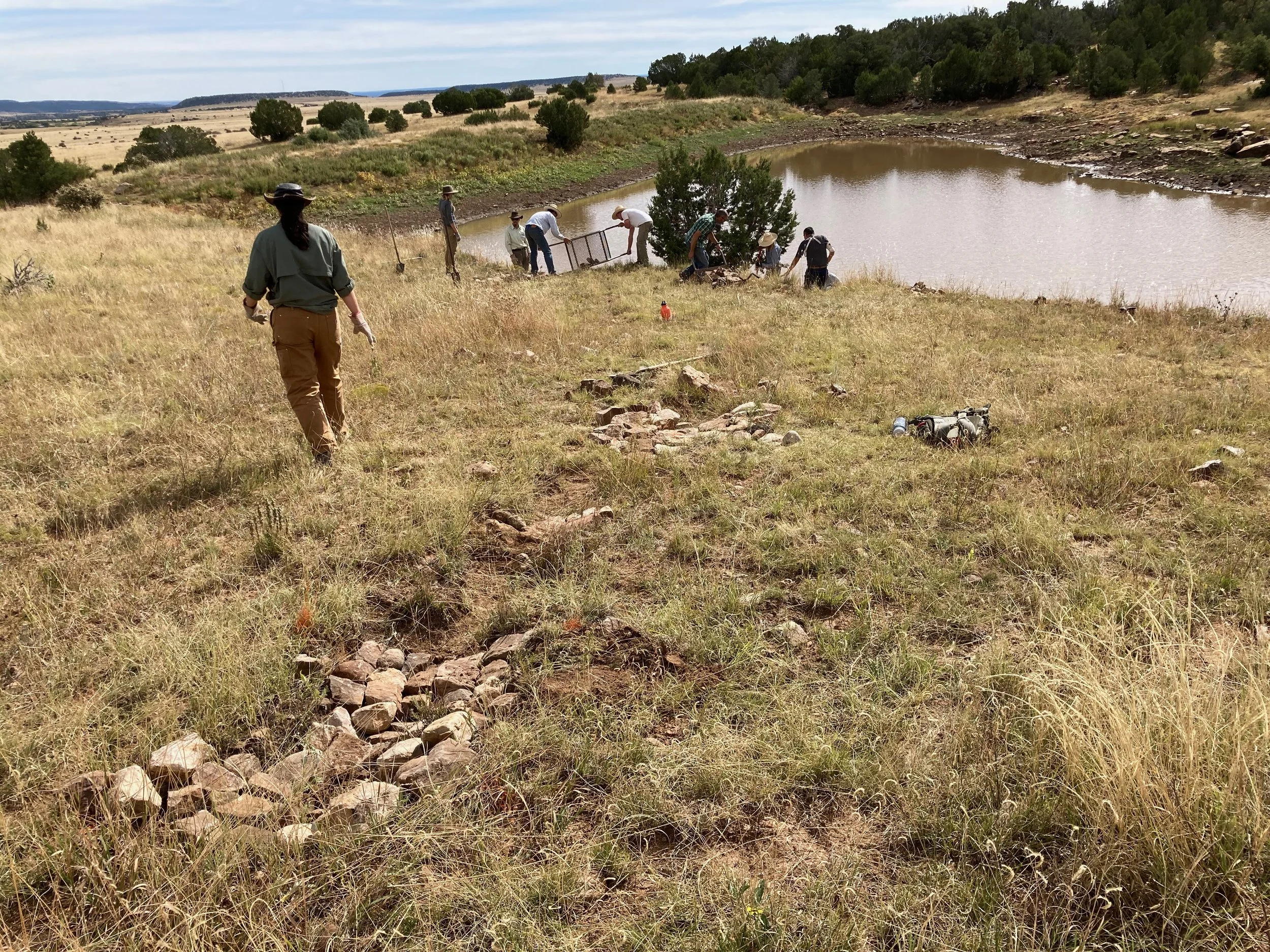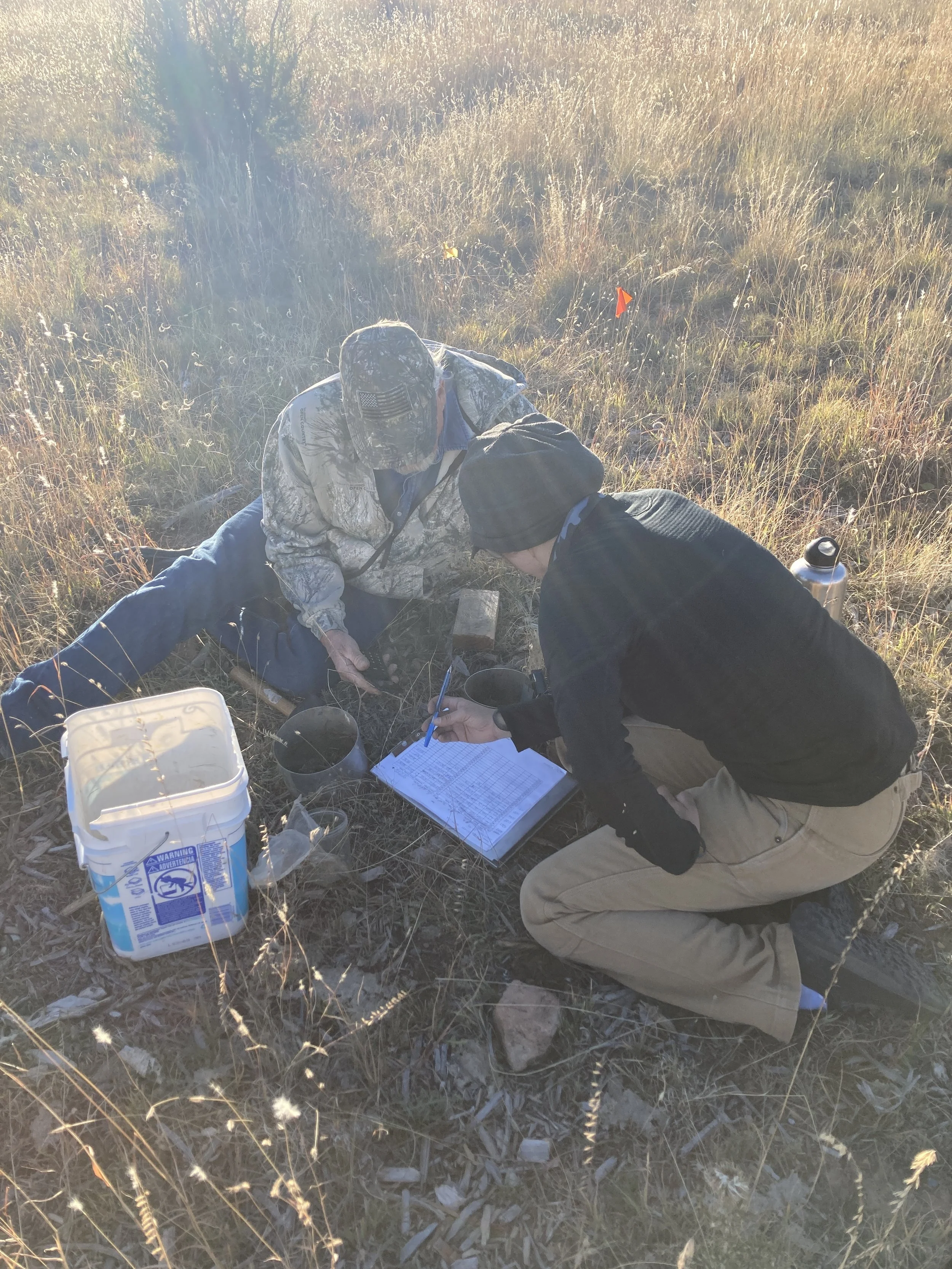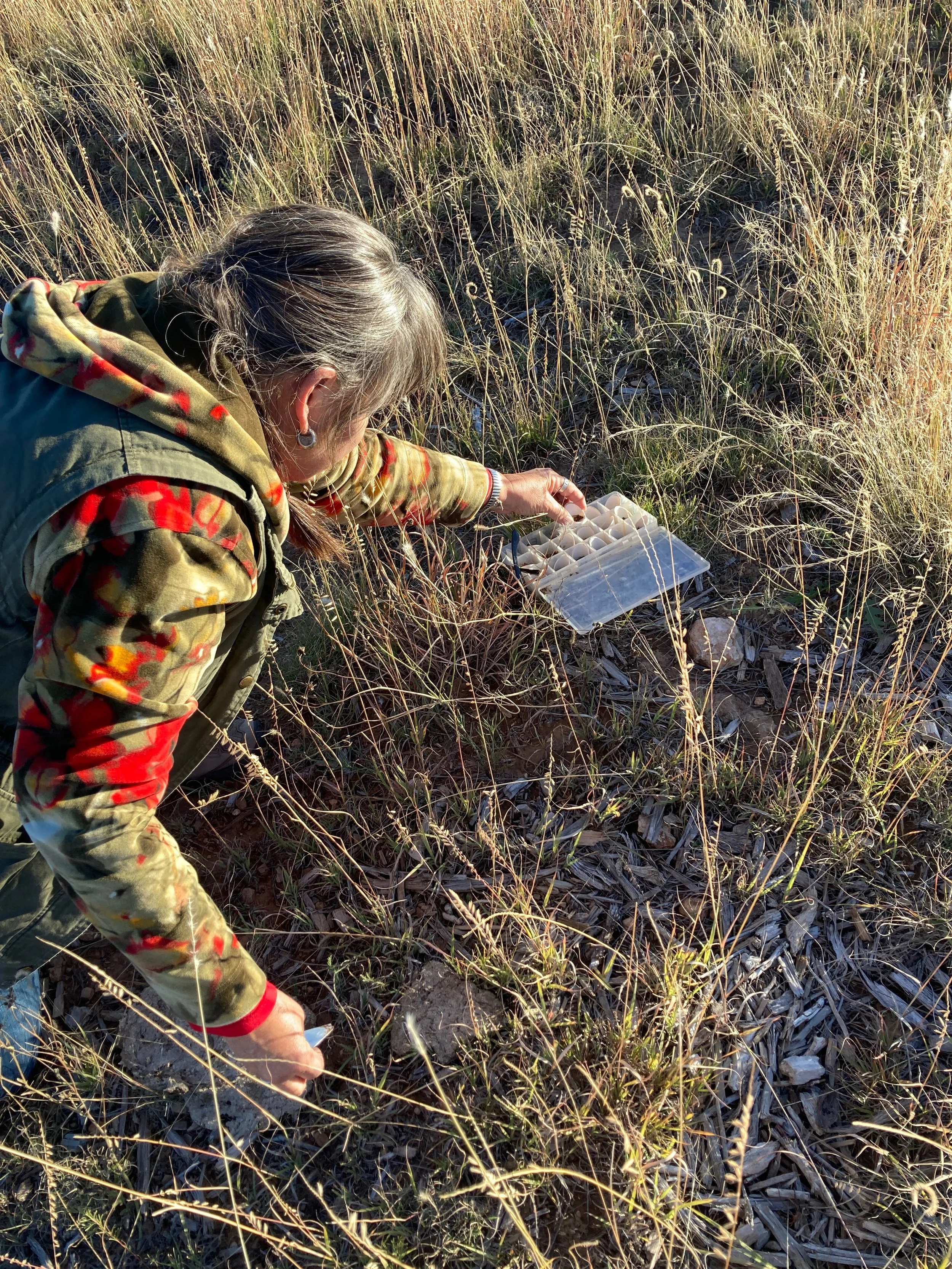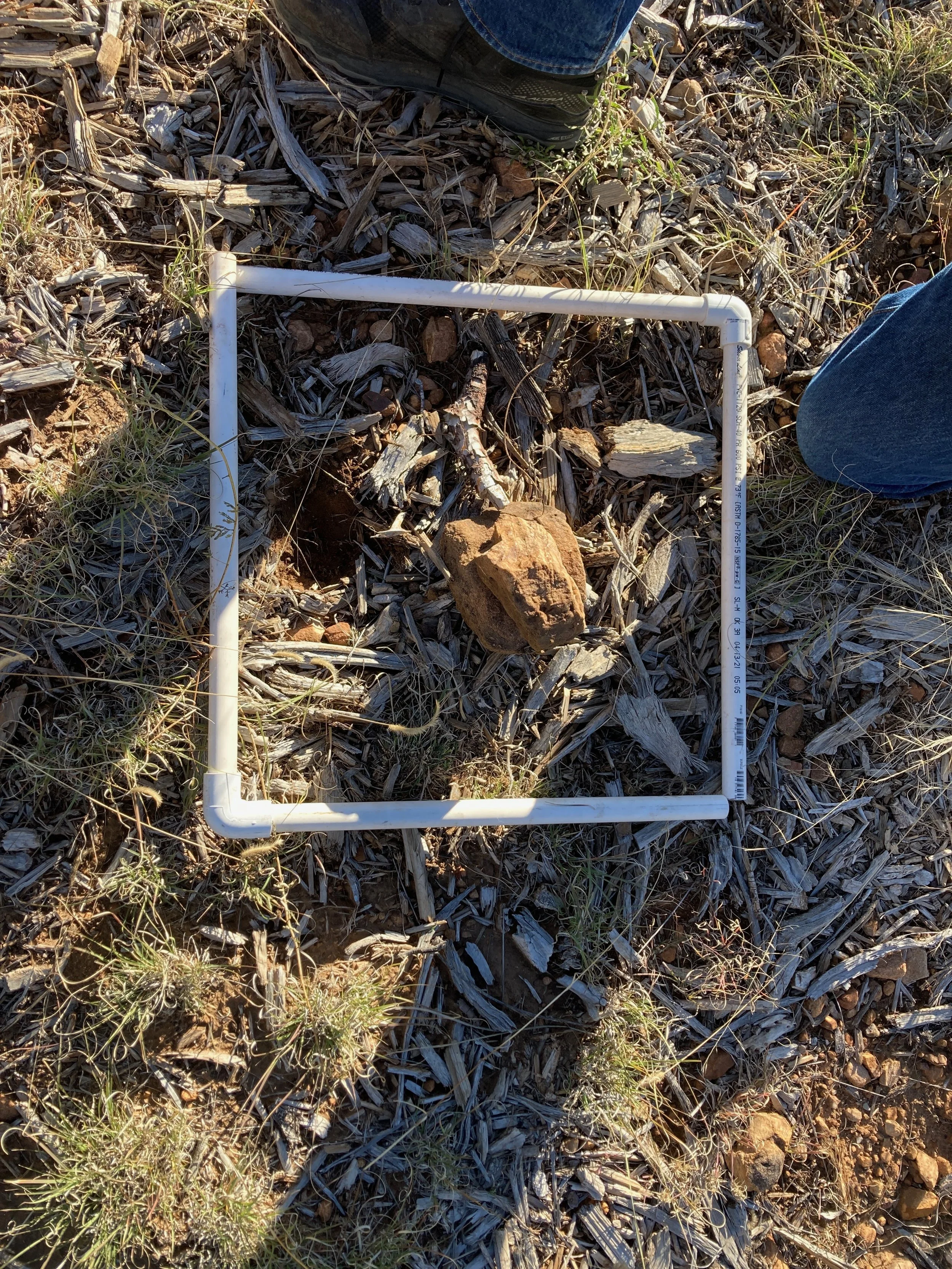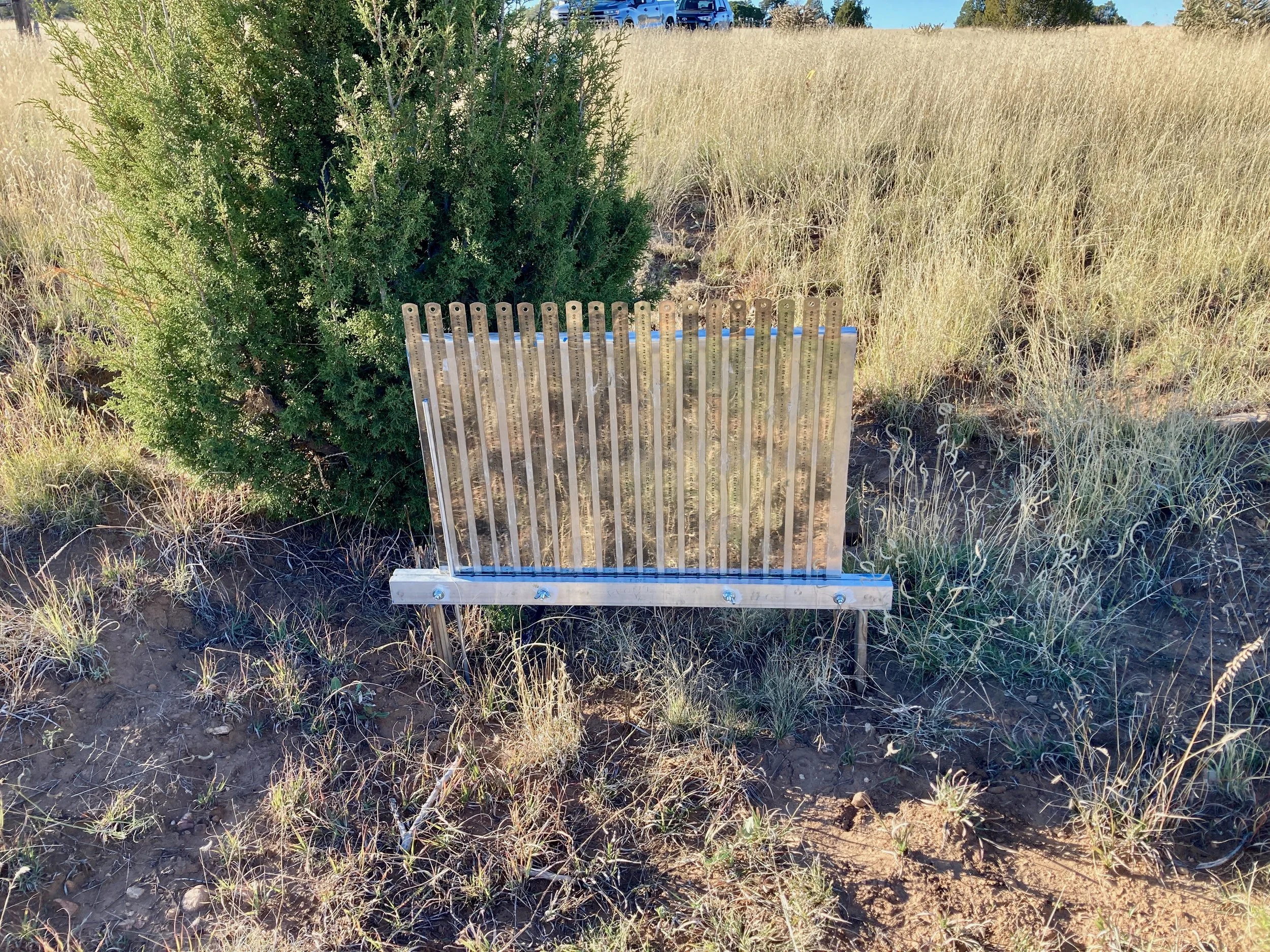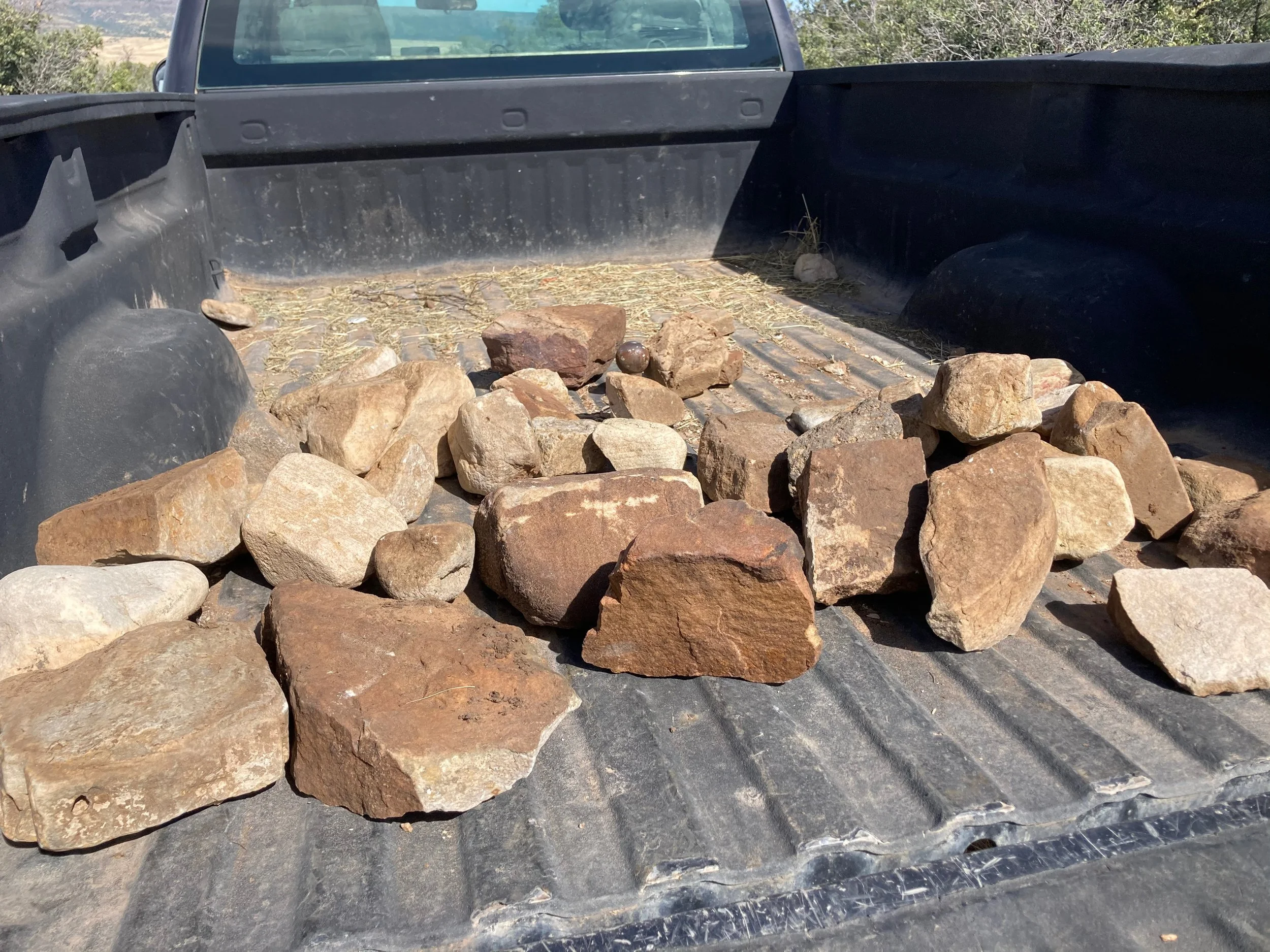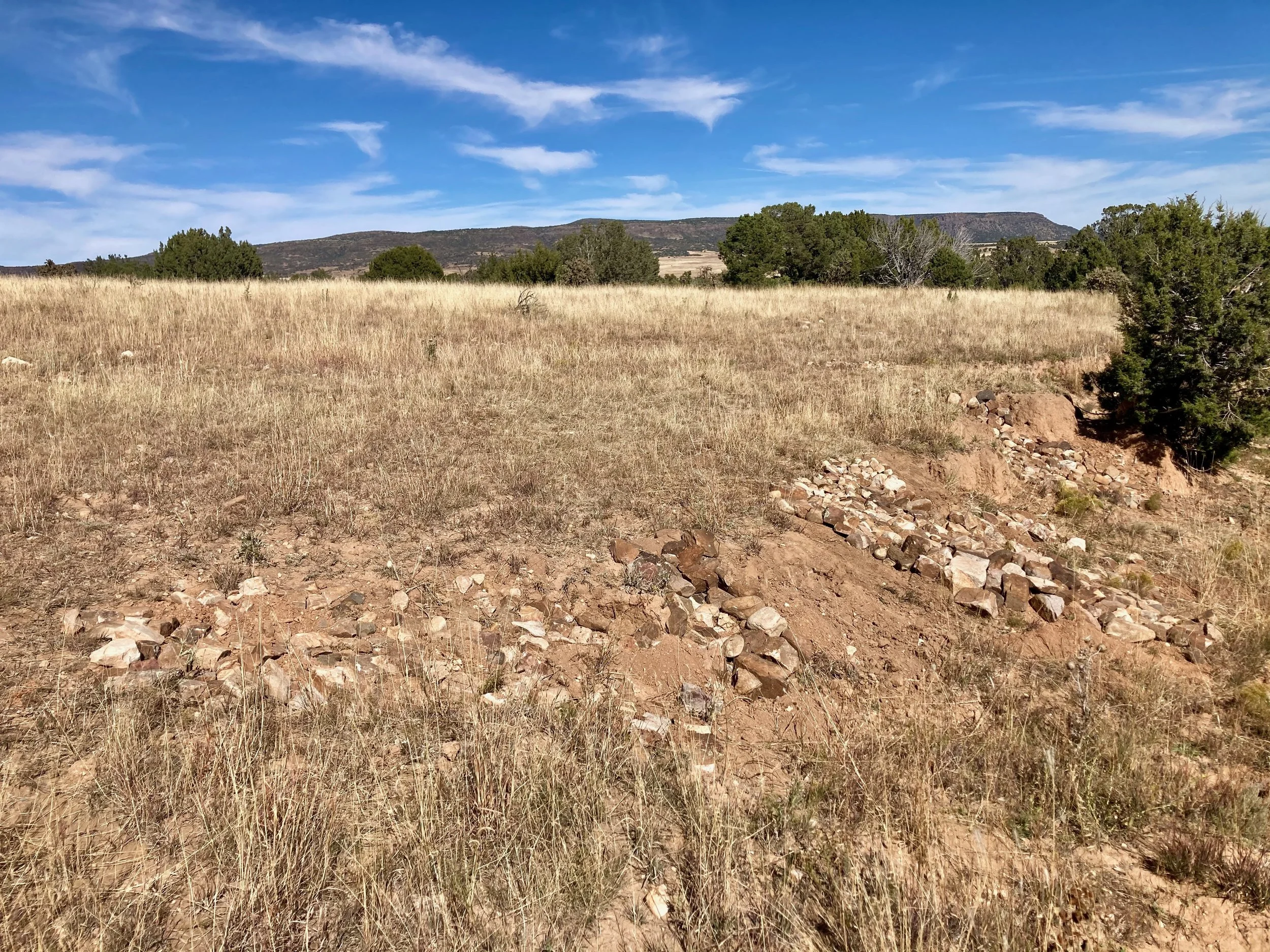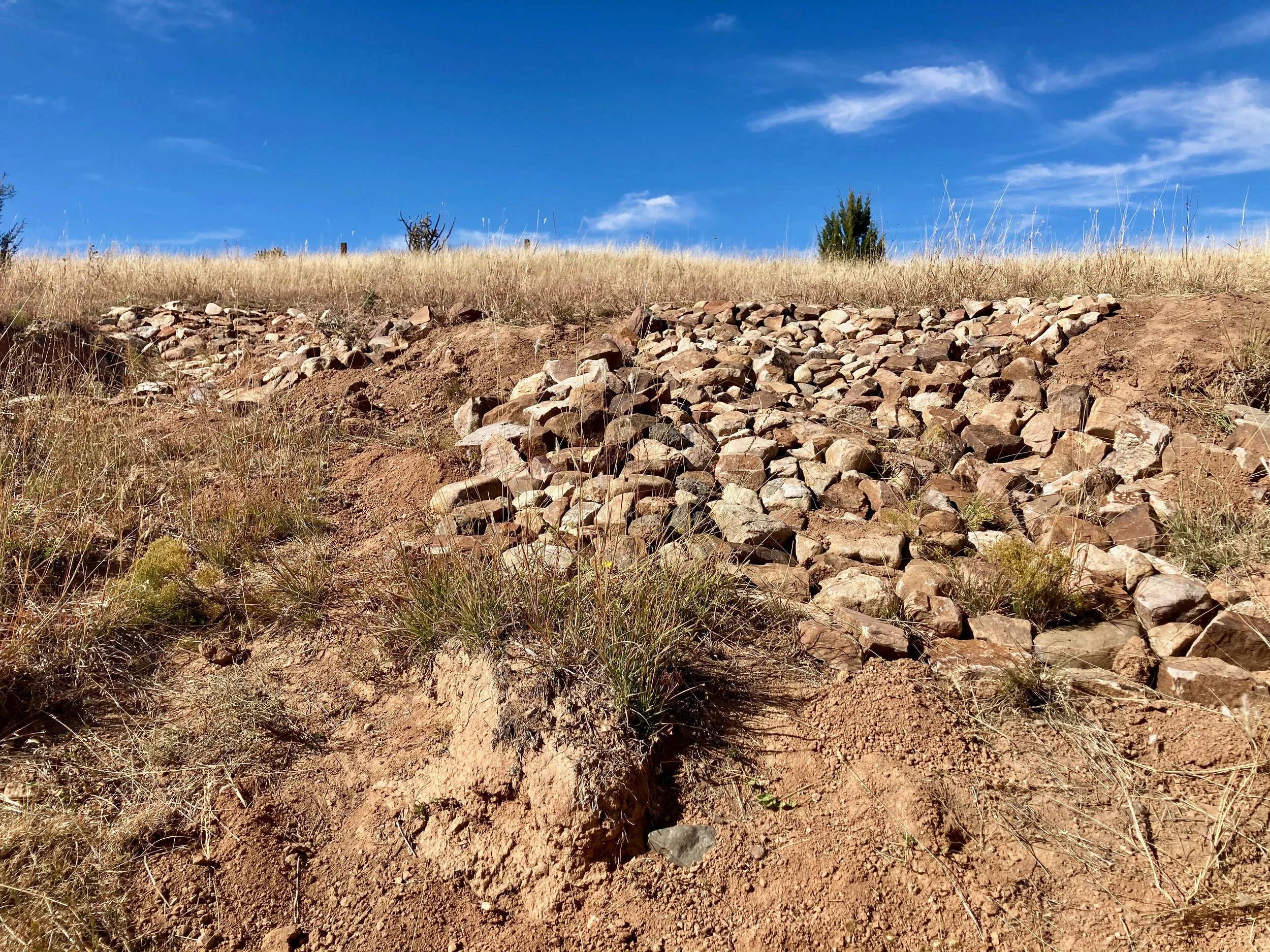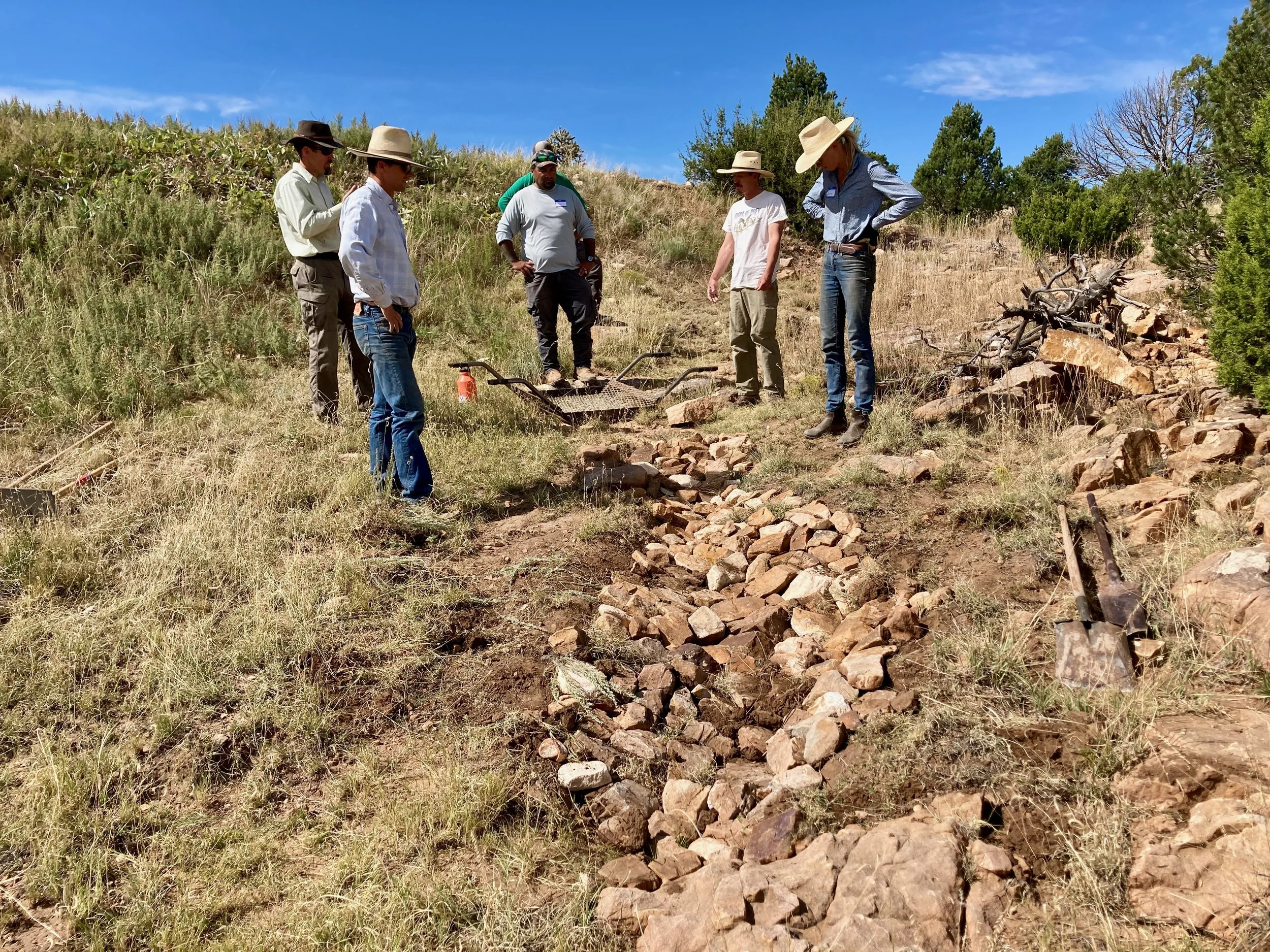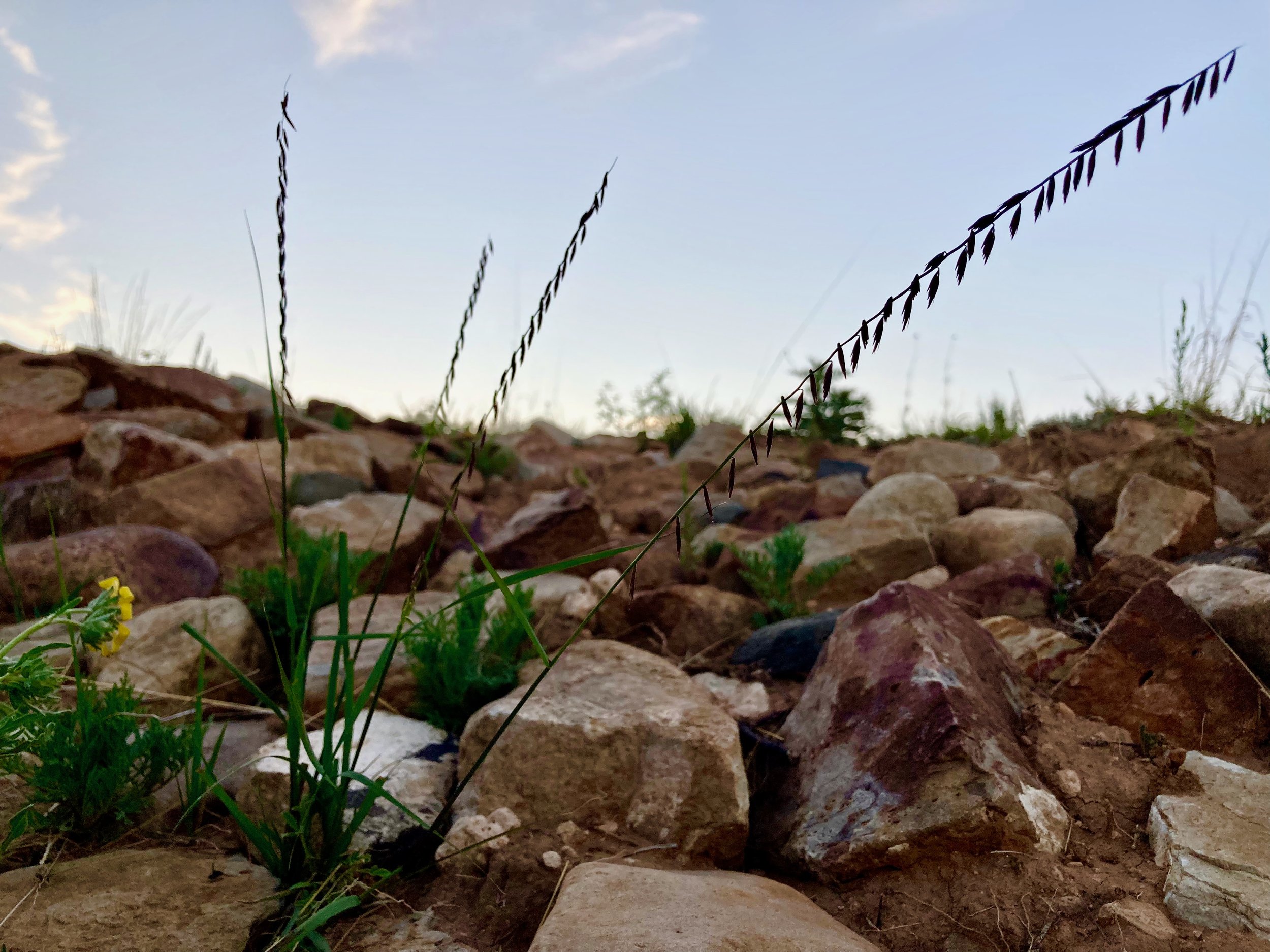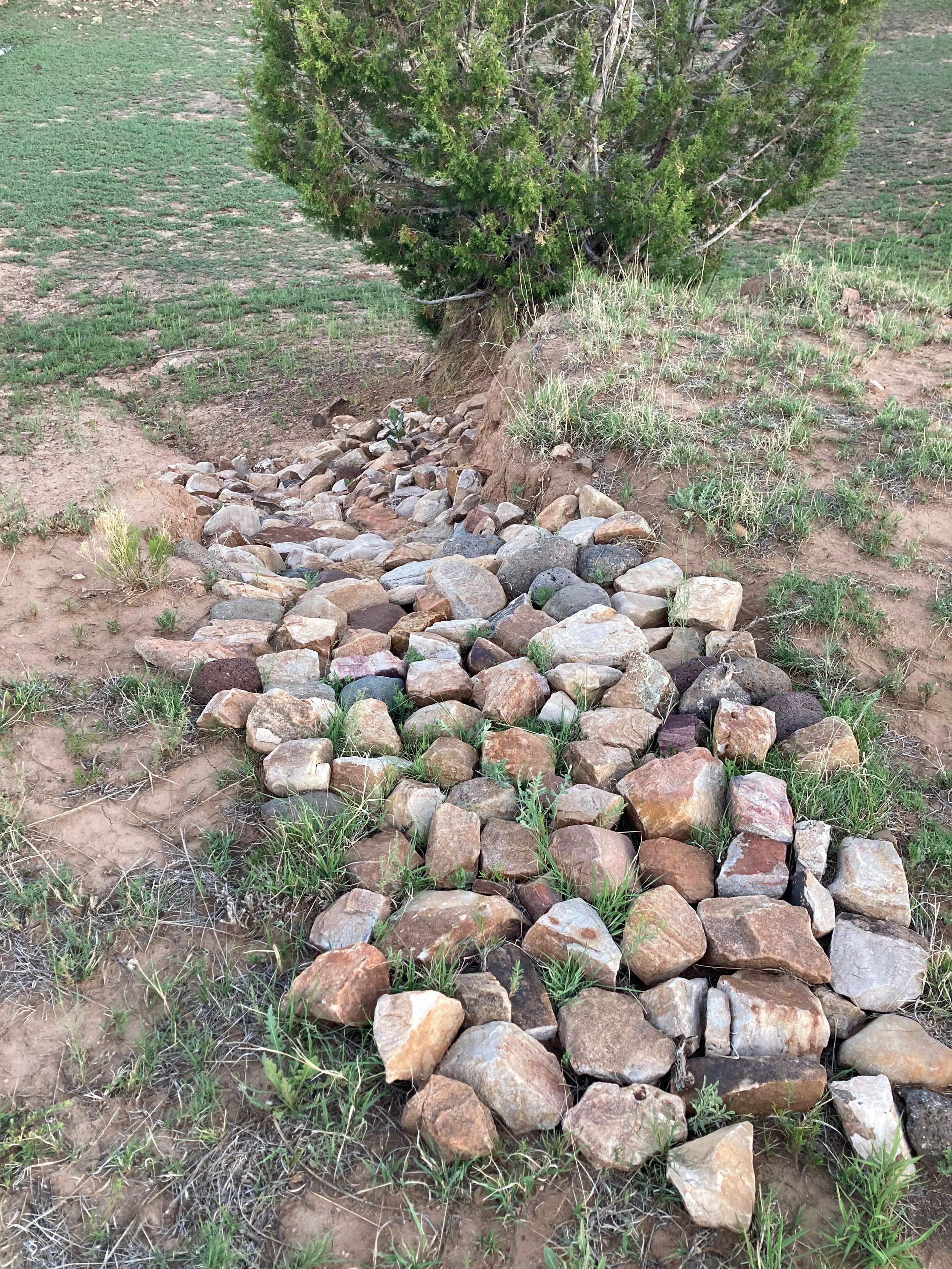3. Slow That flow
Hello everyone,
I hope you all are enjoying the fall weather and the feeling of winter coming on. We are entering the season of gratitude and fall work here at Sol Ranch. It’s a time when we can see what was grown over the season including our calves, our winter stockpile of grass in the pasture, our connections, and ourselves. It’s been a slow and quiet three months here at the ranch. Many of the projects that we had on the docket are coming to a close including some of the soil amendment and erosion control studies we’ve been working on with the Quivira Coalition.
The beef business is lining out as well after several years spent creating systems, hiring employees, figuring out how to own and run a beef business, learning how to finish livestock on grass, then wading through the complexity of getting animals processed during a pandemic, marketing our beef, running a website, and developing customer service skills. It feels like it has been a whirlwind of learning and not all of those lessons are about the business. But what’s here now, after all that time and sacrifice, is something that finally feels like flow.
From the many lessons, I’ve finally learned that reflection and introspection are vital components of every healthy human being’s life path, especially if we should like that path to lead towards peace. Happiness is an inside job and to experience it, we must live our lives in alignment with our purpose, with our values, and with our goals for ourselves. When we rush from moment to moment, we not only miss our wrong turns but also moments for gratitude and joy which can only come from staying in the present moment, the only moment we have real influence over.
It seems that slowing down when possible is a necessity for living this lifestyle long-term and maintaining flow. To do this, we have to learn to take the space between tasks, between projects, between seasons to check in with our bodies, with our minds, with our team, and with our family. We have to find the eddies on the river where we can take a breather before the next rapid. This space between is where we ground ourselves. If we are always in a rush from task to task constantly chasing the light at the end of the stick we dangle in front of our noses, pushing us ever further into the spiral of overwork and burn-out, we will never awaken to our steadiness, to our peacefulness, and eventually to our purpose. It’s easy to see the ways in which land health is similar to that of human health. It is imperative that they both have mechanisms for either absorbing the energy from the flow of water/life or allow it to pass over easily without eroding stability or integrity. This work takes time.
Life should flow
Slowing down flow in the right places for the right reasons can make all the difference in how we are able to handle that flow over time.
With all this slowing down here at the ranch recently, I finally had some time to find a little more balance in my life. I had some time to reflect and revisit goals, values, lessons, purpose, and paths for myself and for this ranch. I even had time to go backpacking with my dad and visit a friend in Hawaii. This time spent moving through life a little slower, a little more present, a little more open, and a little more grateful has changed my mindset. Of course it wasn’t easy getting here, but I’m sure you all know that’s just part of the way these lessons show up sometimes, like rapids on any good river.
Speaking of slowing down, we recently spent some time with Eva Stricker, director of the Carbon Ranch Initiative at the Quivira Coalition on our hands and knees with our noses close to the ground examining the impacts of the erosion control structures and soil amendments we built last fall to slow the water moving across the landscape. This work ties in with some of our other trials looking at the effects of bale grazing, biochar, and compost applied to rangeland for the purpose of hopefully waking up the soil and plant life while increasing water infiltration. My parents and I got to jump in with some water infiltration measurements and accretion vs erosion measurements during this monitoring phase. It was really cool to slow down with my parents and really look at how this project and the years of work they have already put in have positively impacted the land and have taught us something about dealing with life’s flow.
To tell you more about this, I’ll let Shannon Maes take over with a post originally published in Polk’s Folly Farm’s blog post from the fall of 2021 about the workshop we hosted here at Sol Ranch to provide hands-on education for our friends and neighbors on ways to slow water down and increase vegetative stabilization.
Shannon is a former Sol Ranch apprentice and is currently working at the San Juan Ranch in Saguache, Colorado as a second-year apprentice furthering her skills in the regenerative ranching realm. We were so lucky to have this amazing woman join us for eight months in 2021. We are certain that she will make wonderful contributions to agriculture throughout her life. She is filled with passion for soil health and ecology with a strong commitment to restoring the land and producing good food. Please read on to hear about Shannon’s spring to summer transition to the growing season of 2021.
01 November 2021
Restoration/erosion control through rock structures and brush dams, workshop with Mori (Quivira)
Early October found us inching up one of the roughest stretches of road here on Sol Ranch where a small, highly ephemeral drainage from the pastures on top of the Mogote hills has exposed bedrock and beds of pebbles, cobble and boulders. This spot was probably chosen for the access road however long ago because although it makes for a slow and bouncy ride it is much smoother and more open than any of the land around it. Dakota sandstone, the primary rock of the Mogote hills, forms many bony and sometimes bizarrely-shaped outcrops among and between the small incised canyons that carry water down to the grasslands below. The rock is sparkly, individual sand grains made of glass-like silica and tinted rosy shades of tan, peach and brown. When rainstorms bring sudden torrents of water down on the ranch landscape all this exposed rock has no ability to absorb the flow. Streams of surprising size and power can form in minutes, hurling water onto the prairie below as it slopes away from the Mogotes to the south.
These flashy runoff events and the rampant erosion they create are the reason we’ve brought the ranch trucks up this rocky hillside. We’re collecting rocks. Not destined to become pets or yard ornaments (although beautiful) these rocks are to be used for building simple structures installed right into sites of active erosion in order to change the behaviour of the water, making it less destructive and more helpful. We’re hoping to armor the soil against erosion and both slow and spread the water, giving it a better chance to soak into the soil where it can nourish plant roots, fungi and microbes.
In the arid southwest with its deep history of human land use, abundant exposed rock and infrequent moisture, erosion has long wielded tremendous influence on the land. As part of their land stewardship practices Indigenous people of this region have proactively managed water and erosion for thousands of years, including the building of rock erosion control structures.This practice continues in many Pueblo communities today. In recent decades Bill Zeedyk has also made profound contributions to the land stewardship community’s practical understanding of watershed health. Part of his life’s work has included building upon traditional ecological knowledge of erosion control structures as well as teaching and inspiring many others including volunteers, ranchers, agency personnel and scientists to actively work towards healthier watersheds and riparian habitats on the lands they work on or manage.
Like everywhere else in the southwest, this ranch provides many opportunities for practical study of how water moves on the landscape and the erosion it can cause. And in ranching, every day is a school day. In early October we worked with the Quivira Coalition to organize an erosion control workshop here at the ranch. The goals of the workshop were to help ourselves (Sol Ranch team) and our local community learn more about how to do this important erosion control work and also get some of the work done. Mori Hensley, a young and very inspired Land and Water Program Assistant with Quivira, came to the ranch to help us choose focus areas for the workshop and to lead the event itself.
When the workshop day arrived I was surprised and honored that so many of our friends, colleagues, neighbors and a few new friends came to learn and help us out. The weather was perfect and people seemed genuinely happy to be together and get to work. I myself had a ton of fun learning from Mori and from everyone else. And we accomplished so much!!! It was humbling to see the rock piles that took us several afternoons to collect and stage near the worksites practically fly into place within structures, as many hands truly did make the work feel light. It is so amazing what becomes possible (sometimes even fun and easy) when we work together. In the future as time allows and erosion features continue to develop we hope to address them through a combination of grazing management, water management on ranch roads and building more rock and brush structures. Fortunately we have a lot of loose rock and juniper brush available, and now we have a little more knowledge and experience as well.
—Shannon Maes
Now let’s not forget that this newsletter is also where you can find opportunities to take advantage of exclusive discounts offered as a thanks for listening to our ramblings. We want you to find value in our exchange and not be a waste of your time, but rather a bit of light and a ray of Sol in your day. So head on over to our website to get an early holiday discount of 5% off in addition to the current fall discount of 5% off. Just use checkout codes HOLIDAYS and FALLHARVEST.
Once again, thank you for joining us and happy fall! May you find the special rewards of gratitude within your own life this holiday season.
Cheers,
Emily Cornell
Sol Ranch
Wagon Mound, NM
solranchnm@gmail.com
solranchnm.com

